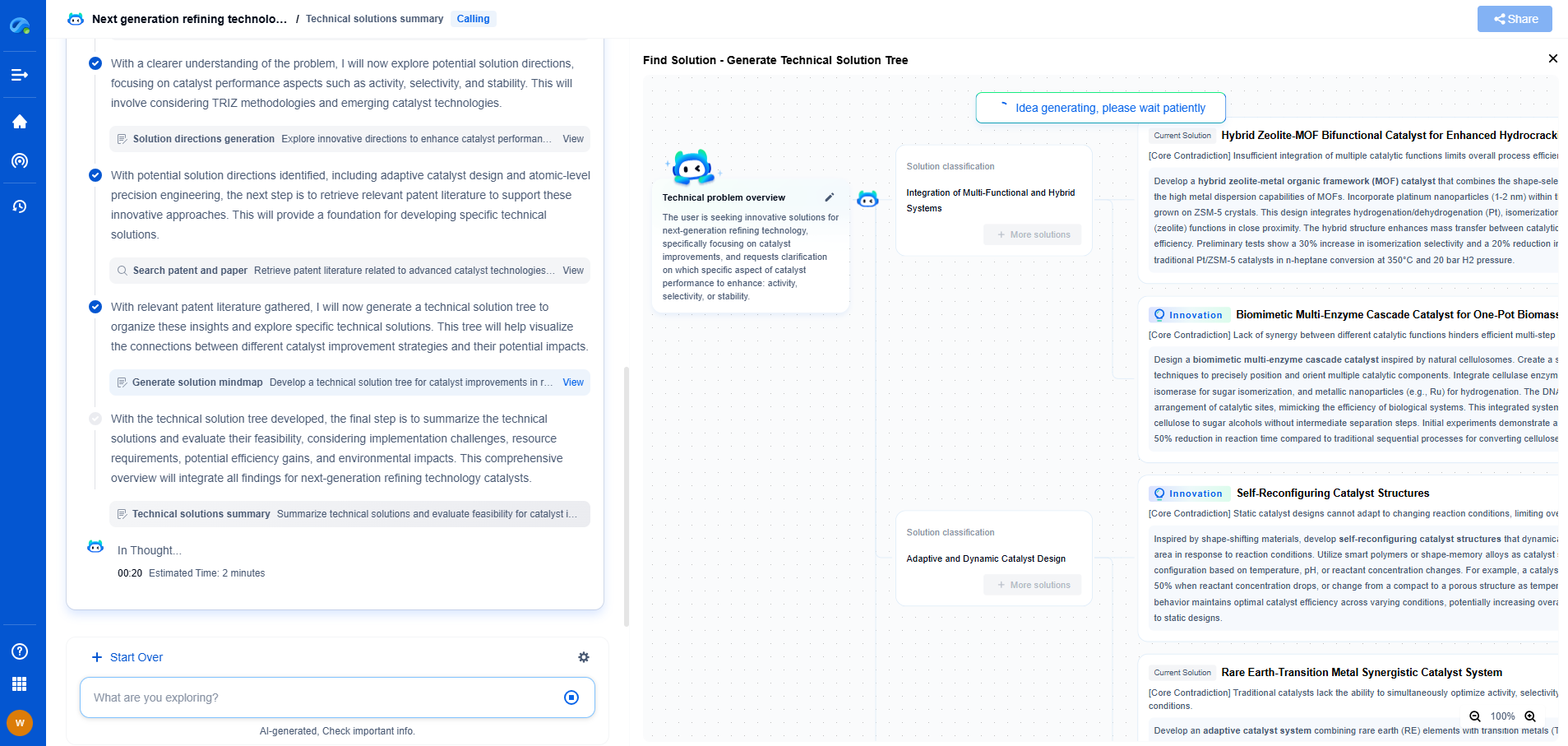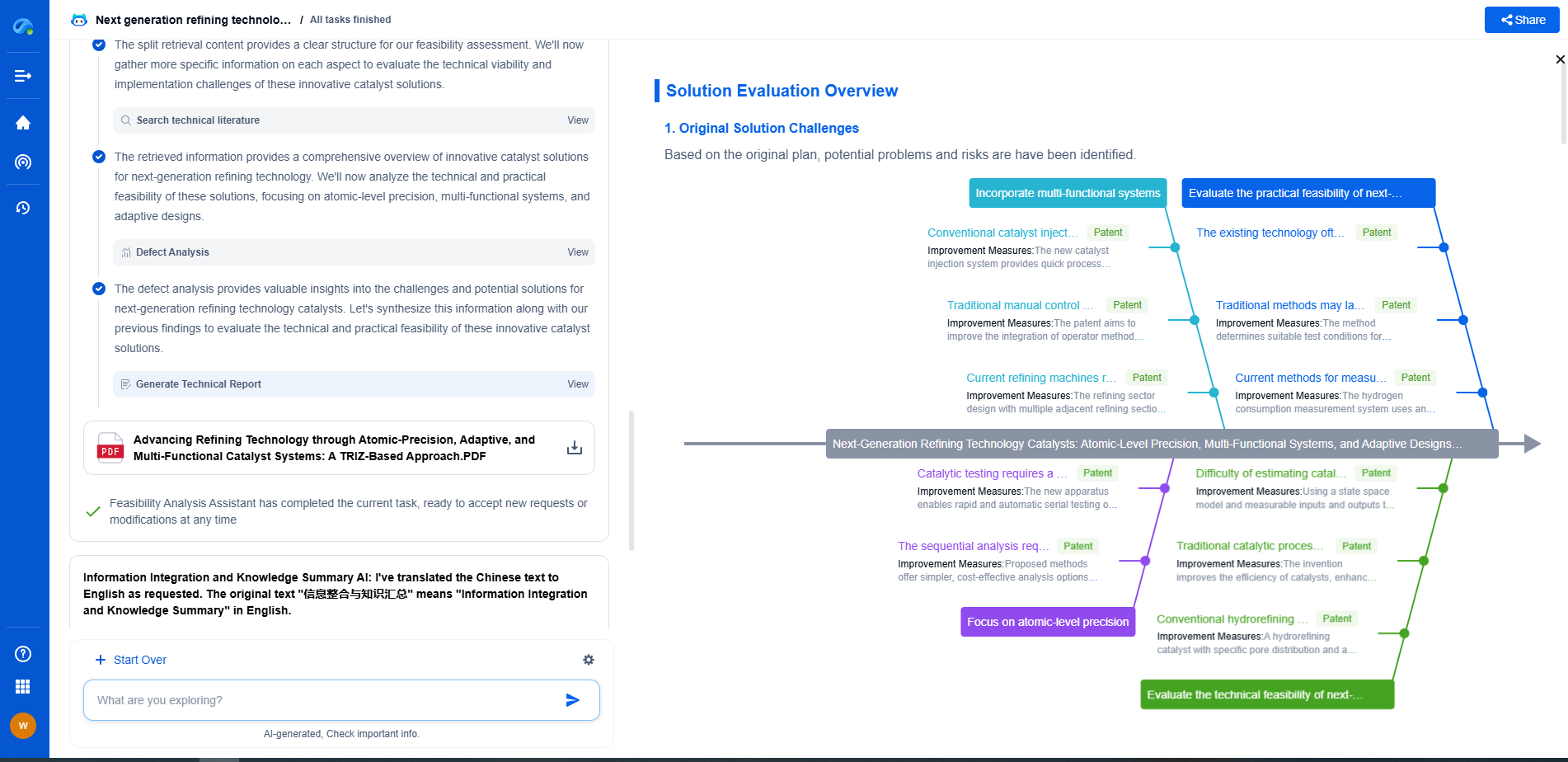Key Patent Licensing Models in the Wind Energy Industry
JUN 26, 2025 |
Understanding Patent Licensing in Wind Energy
Before delving into specific models, it's crucial to understand the role of patent licensing in the wind energy sector. Patents provide inventors with exclusive rights to their innovations, preventing others from using, selling, or manufacturing the patented technology without permission. Licensing agreements allow patent holders to grant these rights to others, either exclusively or non-exclusively, in exchange for royalties or other financial compensation. This process accelerates the spread of new technologies and supports ongoing innovation by providing financial incentives to inventors.
Traditional Licensing Models
1. Exclusive Licensing
In the exclusive licensing model, the patent holder grants rights to a single licensee, often for a specific region or market. This model allows the licensee to have complete control over the technology, often resulting in more significant investment in development and commercialization. However, it also limits the technology's dissemination, potentially slowing the overall advancement of the industry.
2. Non-Exclusive Licensing
Conversely, non-exclusive licensing allows multiple entities to access the patented technology, fostering broader dissemination and adoption. This model encourages competition, which can drive down costs and spur innovation. In the wind energy industry, non-exclusive licensing is often favored for foundational technologies that benefit from widespread use.
3. Cross-Licensing Agreements
In a cross-licensing agreement, two or more parties grant each other rights to use specific technologies covered by their respective patents. This model is particularly beneficial in industries like wind energy, where companies often hold complementary technologies. Cross-licensing can reduce litigation risks and allow for more robust and integrated technological solutions to emerge.
Emerging Licensing Models
1. Patent Pools
Patent pools involve multiple patent holders combining their patents and licensing them as a package to third parties. This model simplifies the licensing process, reducing transaction costs and preventing potential patent thickets, where overlapping patent claims create legal barriers. In the wind energy industry, patent pools can facilitate the integration of complex systems and technologies, promoting innovation and competition.
2. Open Innovation Models
Open innovation models encourage the sharing of technologies and ideas beyond traditional licensing mechanisms. These models often involve collaborative projects and partnerships between companies, research institutions, and even governments. In wind energy, open innovation can lead to rapid advancements by pooling resources and expertise, potentially accelerating the transition to renewable energy.
3. Compulsory Licensing
While less common, compulsory licensing allows governments to authorize the use of patented technology without the patent holder's consent under specific circumstances, such as addressing public health or environmental crises. In the context of wind energy, compulsory licensing could be invoked to ensure the availability of critical technologies necessary for mitigating climate change.
Challenges and Opportunities
While patent licensing models play a crucial role in promoting innovation, they also present challenges. Complex negotiations, high licensing fees, and potential litigation can create barriers for smaller companies and startups. However, they also offer opportunities for collaboration, risk-sharing, and market expansion. For the wind energy industry to continue its upward trajectory, stakeholders must navigate these challenges and embrace licensing models that foster innovation and inclusivity.
The Future of Patent Licensing in Wind Energy
As the wind energy sector evolves, so too will its patent licensing landscape. Emerging trends such as artificial intelligence, data analytics, and digitalization are likely to influence future licensing models. Moreover, the growing emphasis on sustainability and environmental responsibility may drive the development of new frameworks that prioritize open access and collaboration.
In conclusion, understanding and strategically utilizing patent licensing models is vital for stakeholders in the wind energy industry. By embracing innovative approaches and fostering collaboration, the industry can continue to advance, contributing to a more sustainable and resilient energy future.
Empower Your Wind Power Innovation with AI
In the fast-evolving landscape of wind turbine technology—where aerodynamic optimization, generator efficiency, and structural innovation are critical—staying ahead requires more than just expertise. It requires intelligent tools that accelerate R&D and protect your competitive edge.
Patsnap Eureka is your AI-powered research assistant, designed specifically for innovators like you working at the forefront of Wind Motors. Whether you're analyzing blade design trends, exploring novel gearbox architectures, or navigating complex global patent landscapes, Eureka streamlines the entire process with precision and speed.
👉 Experience how Patsnap Eureka can revolutionize your R&D and IP strategy. Request a demo today and power up your next breakthrough.
- R&D
- Intellectual Property
- Life Sciences
- Materials
- Tech Scout
- Unparalleled Data Quality
- Higher Quality Content
- 60% Fewer Hallucinations
Browse by: Latest US Patents, China's latest patents, Technical Efficacy Thesaurus, Application Domain, Technology Topic, Popular Technical Reports.
© 2025 PatSnap. All rights reserved.Legal|Privacy policy|Modern Slavery Act Transparency Statement|Sitemap|About US| Contact US: help@patsnap.com

